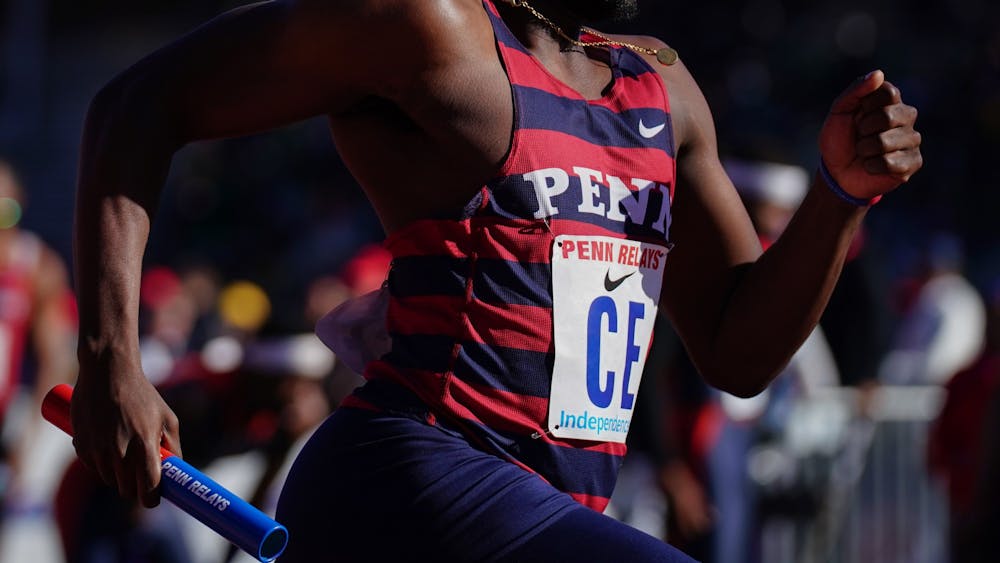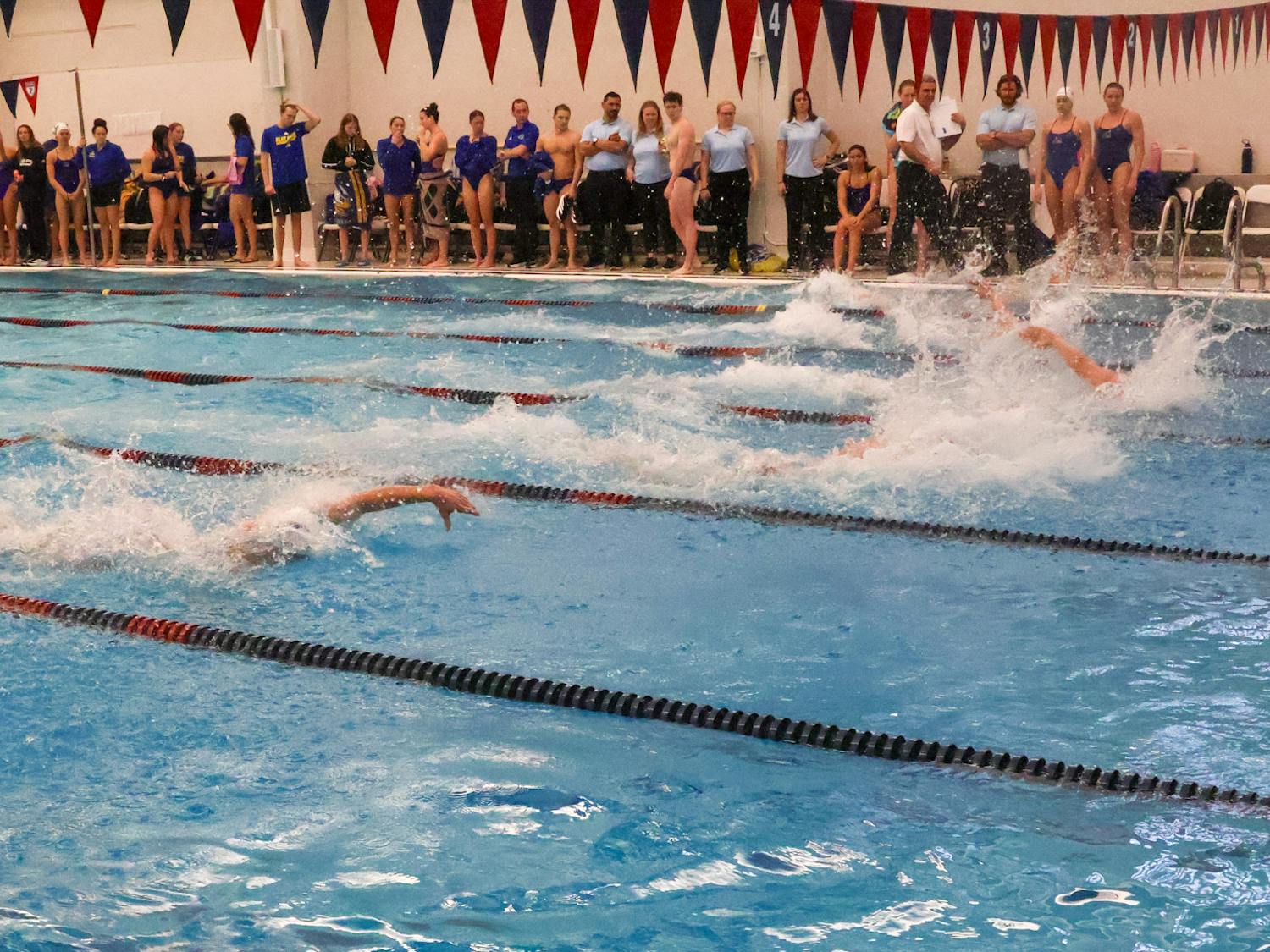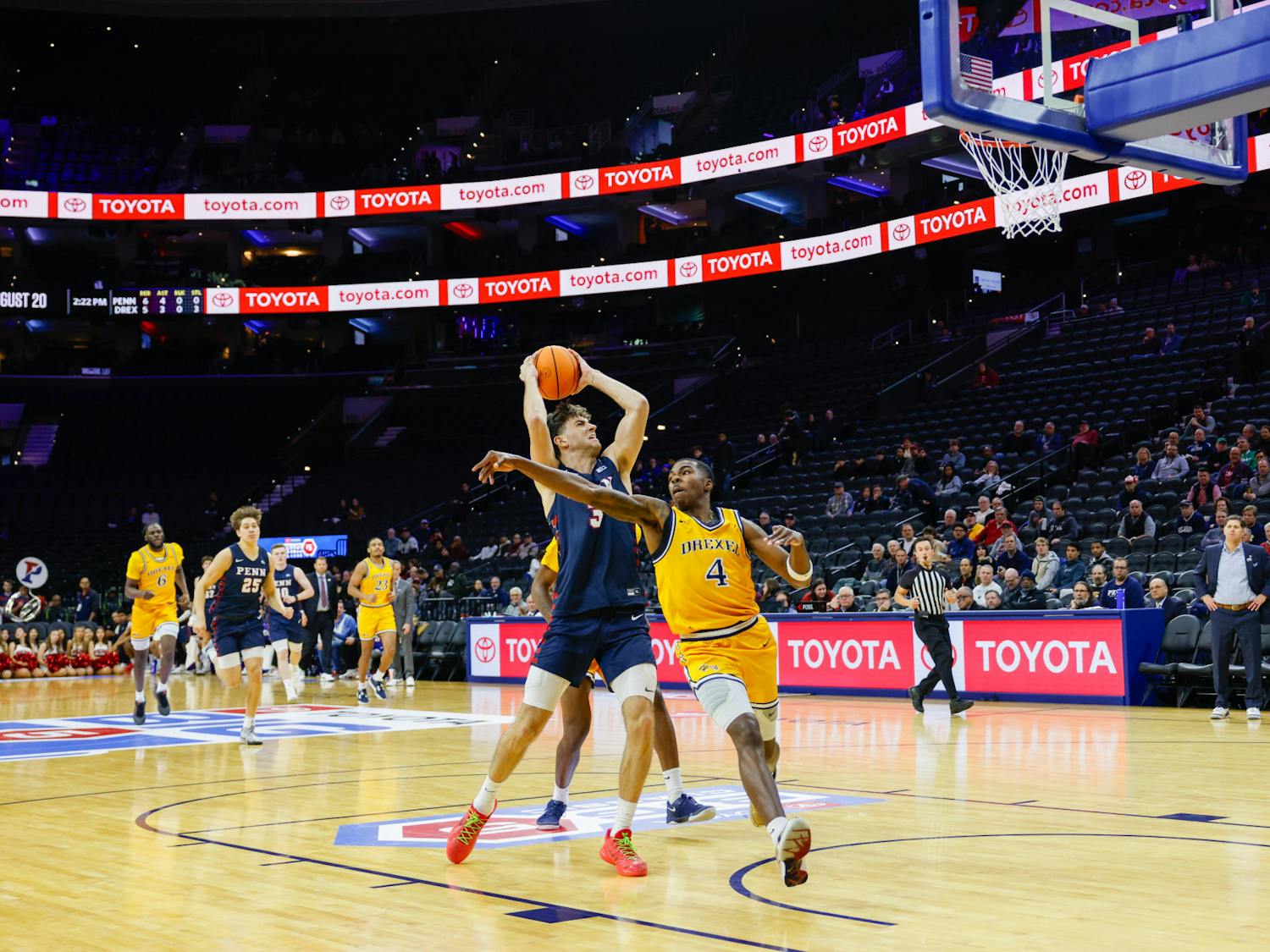The struggle of Black athletes to assume deserved spots on Penn’s athletic teams has spanned decades.
There was not one "color line" to cross at Penn, but many, and the names and stories of several Quakers who defied the odds to wear the Red and Blue are lost to history. Nevertheless, their struggles and achievements cannot be forgotten.
From the records that do exist, one can find lessons in bravery, perseverance, and athletic excellence.
The story starts with track and field.
The Penn Relays is the nation's largest amateur track and field competition. The event has been open to Black entrants since its inception in 1895, which, at the time, was relatively unique for a sporting event.
Dave Johnson, who in June stepped down as the Penn Relays' director after 25 years in the position, told Sports Illustrated that he once came across an archival letter from the 1910s, which was written from a Relays official to an administrator of a participating school. The administrator had threatened to pull his team out of the meet if Black athletes were permitted to participate, but the official dismissed the threats in the letter, holding firm on the Relays’ tolerant policy.
While the Relays were always integrated, it would be a few years before a Black athlete would represent the Red and Blue at the event.
John Baxter Taylor, Jr. enrolled as a Wharton student in 1903 before transferring to Penn’s School of Veterinary Medicine, where he would ultimately graduate from in 1908. Taylor competed on Penn’s track team in 1903, 1904, 1905, 1907, and 1908.
RELATED:
A century of progress: Looking back at women's athletics at Penn over time
The show went on: How sports operated at Penn during the influenza pandemic of 1918
Indisputably the best college-level quarter-miler at the time, Taylor set the collegiate record for 440 yards with a time of 49.1 seconds in 1903. He beat his own record in 1907 with a time of 48.6 seconds.
Taylor went on to represent the United States at the 1908 Olympics in London, competing in both the 400-meter race and the 1600 medley relay. Taylor was a major contender for the gold medal in the former, but ultimately forfeited a chance at the title.

John Baxter Taylor, Jr. (second from left) and his teammates in the 1600-meter relay at the 1908 London Olympics.
During the race, a controversial foul was called on an American runner, causing officials to call for a rematch. Disagreements between the American and British athletes led Taylor and the other American athletes to boycott the 400-meter rerun.
In his second event, Taylor topped the podium as a member of the 1600-meter relay. He was the first Black athlete to win a gold medal in the Olympics for the United States.
Within a few months, however, tragedy struck. Taylor, one of the greatest athletes to come through Penn, would die that December from typhoid pneumonia. He was 26.
Thousands came together at Taylor’s funeral to celebrate the trailblazer’s life.
“Since 1904 he has without doubt been the greatest quarter mile runner in the country, yet his great successes did not turn his head,” the DP wrote after Taylor’s death on Dec. 5, 1908. “Always quiet and reserved, he had the bearing of a true gentleman. We can pay him no higher tribute — John Baxter Taylor: Pennsylvania man, athlete and gentleman.”
Almost a decade after Taylor’s historic Olympic victory, Willis Nelson Cummings would enroll at Penn and become the third Black student to earn a varsity letter at the University after joining the cross country team in 1917.
“Negroes were not allowed to participate in football or basketball or anything but track,” Cummings told the DP in 1979. “There was too much contact in the other sports.”
Cummings was also one of only two Black students enrolled in his year at Penn’s School of Dentistry, and he would go on to graduate sixth in a class of 259.
When he was named captain of the cross country team in 1918, Cummings became the first Black captain of any varsity sport in either the Ivy League or the Big Ten. This milestone was not won without controversy from competitors and within Penn itself.
The Quakers’ team photo tradition was discontinued for that season, out of reluctance to show a Black person sitting in the center as a captain. Despite this, Cummings was determined not to let his race be erased from his accomplishments.
“Back in those days, you never heard anything about Negroes unless they were committing some kind of crime. You never heard about them if they were doing something very good,” Cummings said in 1979. “So after I became friendly with different sports reporters, I asked them to put ‘negro’ after my name, to show that Negroes could accomplish something of significance. But in small letters, to show how insignificant the whole thing really was.”

Willis Nelson Cummings was named captain of Penn cross country in 1918, becoming the Ivy League's first Black captain of a varsity team.
After reporters began following Cummings’ request, some of the Quakers’ cross country opponents were angered. Navy, who had competed against the Red and Blue in 1918, had not realized that Cummings was Black, reportedly due to his light complexion. They subsequently refused to run against him in 1919.
Southern road trips were a fraught issue for Black athletes who integrated in schools above the Mason-Dixon line. Commonly, the integrated and segregated teams would come to a "gentleman’s agreement", and Black players would be benched for the games played against all-white teams. This practice was especially prevalent in football, and continued through the late 1960s.
While Penn’s cross country coach, Lawson Robertson, was reluctant to compete without his captain, Cummings urged the team to travel to Annapolis, Md. without him — it was the last chance for several runners to earn their varsity letter for that year.
The Quakers would ultimately attend the meet without their captain, but Robertson swore he would never again compete against Navy. He kept his word. According to Cummings, for the rest of Robertson’s tenure as coach, Penn and Navy never again clashed in a dual meet.
After his graduation, Cummings’ legacy wasn’t just missing from the team photo. There was no official record of Cummings running at all for Penn until 1963, when he brought his own scrapbook of clippings and archives to the University's administration.
Cummings, who passed away in 1991, has now been restored to his rightful place in the Penn history books.
While Cummings was starring on the cross country team, a man named Douglass Sheffey was joining the Hilldale Athletic Club, an American professional Negro League baseball team based in Darby, Pa.
Sheffey pitched for Hilldale from 1915 to 1917, after which he enrolled in Penn’s School of Dental Medicine in 1920 and became one of the first Black baseball players to suit up as a Quaker.
This was 27 years before Jackie Robinson broke the professional baseball color line in 1947. As the Quaker’s ace, Sheffey certainly had the talent to play in the Major League Baseball, and if he had been white, he likely would have. Another member of the Quakers’ rotation during Sheffey’s tenure, Walt Huntzinger, went on to have an MLB career.
But Sheffey’s story at Penn also has some gaps. Local newspapers, including the Inquirer and the DP, never made any mention of his race or his past in the Negro League while he played for Penn.
Sheffey also was present on the Red and Blue’s road trips to Georgetown and Navy in 1921, which was virtually unheard of for Black athletes at the time. It has been theorized that Sheffey was able to pass as white, and that was how he was able to enter the hostile climate at those schools.
Almost three decades after Sheffey played, a pair of Quakers pushed through the barrier of segregation that had been intact since 1895. Bob Evans and Eddie Bell were the first two Black athletes to play for Penn’s football team.
“I kidded Bob. I told him they recruited me to keep him company,” Bell said, as reported by The Journal Times in 1996. “We faced some racism. One time, we scrimmaged at Maryland. We ate on campus. Some of the players went into a drug store for sodas. When we walked in, they said they couldn't serve us. The whole team left.”

Penn football All-American Eddie Bell (left) in action during the 1952 season opener against Notre Dame.
Bell was named All-American and All-East as a defensive back in 1951 and 1952. Evans was Penn’s first Black football captain in 1952.
“As a player [Evans] is rated as one of the greatest ever to come to Pennsylvania – and we’ve had some great players here over 75 seasons,” the DP wrote on Sept. 26, 1952. “He is exceptionally fast and quick. He has natural reflexes which enable him to get the jump on his opponents. In fact, it sometimes seems to opponents as if there are eleven Bob Evanses playing on defense.”
Evans fell ill a few games into his senior year, was hospitalized for nine days, and rendered unable to complete the season.
Bell, a sprinter for the track team during the football offseason, was also a member of the 1952 team that pulled out of the annual North Carolina Relays. When accommodations could not be made in Chapel Hill for the three Black team members, including Bell, Art Faulk, and Charley Emery, the team voted unanimously to cancel the trip entirely.
This was followed by a call to action from The Daily Pennsylvanian against the overt racial discrimination among Penn’s Southern athletic opponents.
“It is the obligation of Pennsylvania as a leading University and ‘pioneer’ in equality to follow up the lead of the team, openly condemn any such discrimination, and take such steps as necessary to boycott the narrow-mindedness of our Southern ‘colleagues,’” the DP wrote on April 4, 1952. “Active large-scale protest, backed by power and determination, is the only way that we can put an end to this repugnant foolishness. Now is the hour for our University officials to act.”
There is no record of any action by the University administration beyond cancelation of the April trip. Penn track would host North Carolina on Franklin Field only a month later.
While Penn lost the meet to the visiting Tar Heels, Emery set a discus program record with a toss of 162 feet, 6⅜ inches.
It is unknown whether John Edgar Wideman was Penn’s first Black basketball player, though the team photos do not include any Black players until Wideman joined varsity in 1961.
Captaining the team in 1962 and 1963, Wideman led the Quakers to a Big Five title his senior year. The team barely missed an Ivy crown as well, but the Big Five title was just as impressive, if not more. Prior to 1963, Penn had never won more than two Big Five games in a single season.
Wideman was inducted into the Big Five Hall of Fame in 1974. But arguably his greatest accomplishments were off the court.
“On December 15, John was interviewed for the Rhodes Scholarship in Baltimore, then took a hurried train back to Philadelphia in time to help the Quakers edge Vanderbilt, 74-70,” the DP said on Jan. 15, 1963. “After the game he was notified that the coveted scholarship was his; hence Wideman had his cake and ate it too.”
Wideman was also the second Black Rhodes Scholar ever. He returned from Oxford to briefly teach English at Penn, and then left to focus on his award-winning writing career.
Admittedly, these stories only scratch the surface of the endemic racism in collegiate athletics at Penn. Gaps and omissions in Penn’s archives serve as a painful reminder of what is missing from the University’s history.

There is a lack of detailed records on the early achievements of Black female athletes at Penn.
Strikingly, no records exist detailing the achievements of the pioneering Black female athletes at Penn. These names may have been lost to time, or, like in the case of Cummings, purposely hidden by a discriminatory administration.
In any case, racial integration was not an issue to be solved by one person. It took the efforts and sacrifices of many athletes fighting for equal opportunities on Penn sports teams, a significant number of whom are missing from history.








